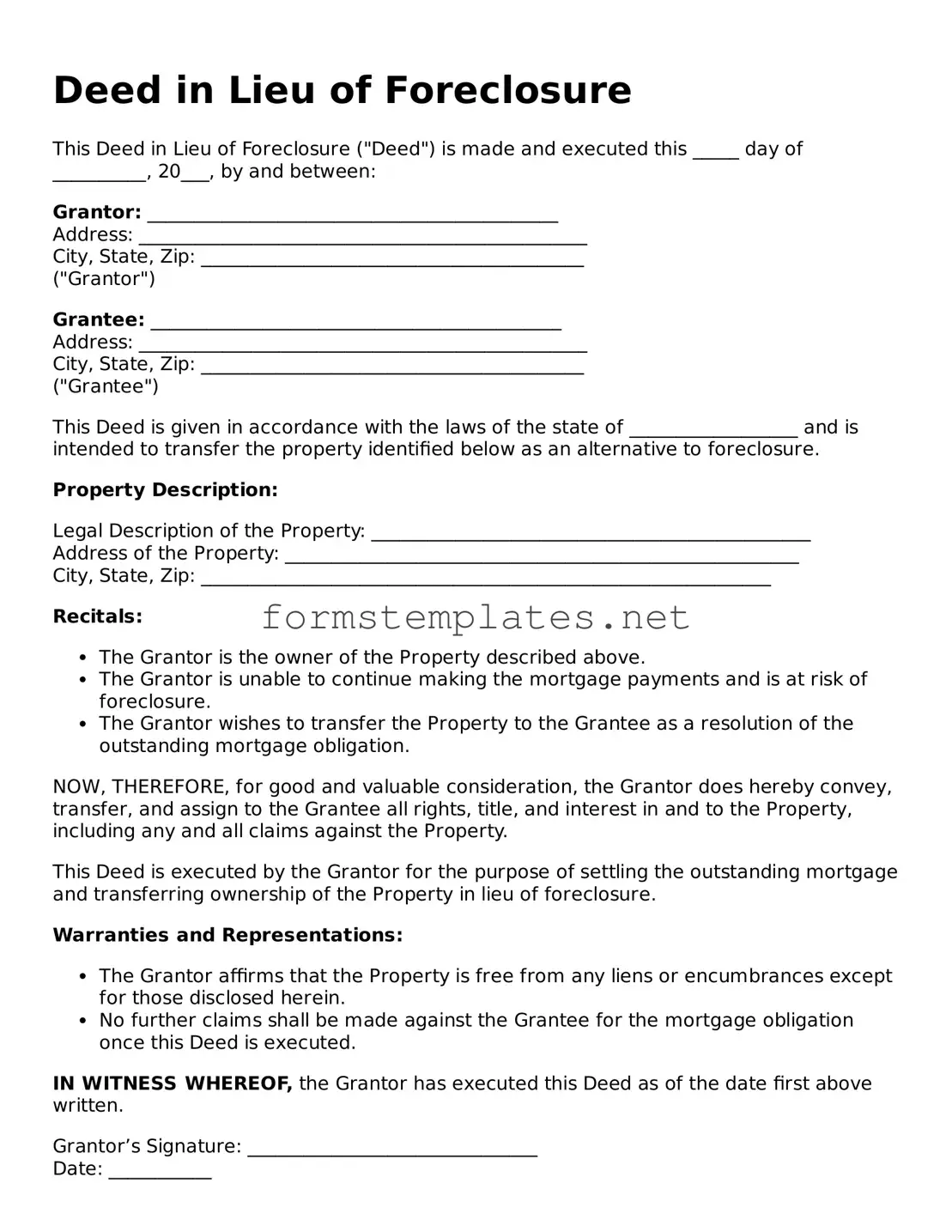Deed in Lieu of Foreclosure
This Deed in Lieu of Foreclosure ("Deed") is made and executed this _____ day of __________, 20___, by and between:
Grantor: ____________________________________________
Address: ________________________________________________
City, State, Zip: _________________________________________
("Grantor")
Grantee: ____________________________________________
Address: ________________________________________________
City, State, Zip: _________________________________________
("Grantee")
This Deed is given in accordance with the laws of the state of __________________ and is intended to transfer the property identified below as an alternative to foreclosure.
Property Description:
Legal Description of the Property: _______________________________________________
Address of the Property: _______________________________________________________
City, State, Zip: _____________________________________________________________
Recitals:
- The Grantor is the owner of the Property described above.
- The Grantor is unable to continue making the mortgage payments and is at risk of foreclosure.
- The Grantor wishes to transfer the Property to the Grantee as a resolution of the outstanding mortgage obligation.
NOW, THEREFORE, for good and valuable consideration, the Grantor does hereby convey, transfer, and assign to the Grantee all rights, title, and interest in and to the Property, including any and all claims against the Property.
This Deed is executed by the Grantor for the purpose of settling the outstanding mortgage and transferring ownership of the Property in lieu of foreclosure.
Warranties and Representations:
- The Grantor affirms that the Property is free from any liens or encumbrances except for those disclosed herein.
- No further claims shall be made against the Grantee for the mortgage obligation once this Deed is executed.
IN WITNESS WHEREOF, the Grantor has executed this Deed as of the date first above written.
Grantor’s Signature: _______________________________
Date: ___________
Grantee’s Signature: _______________________________
Date: ___________
Notary Public:
State of ______________________
County of ______________________
Subscribed and sworn before me this day of ____________, 20___.
Notary Public Signature: _____________________________
My commission expires: _____________________________
